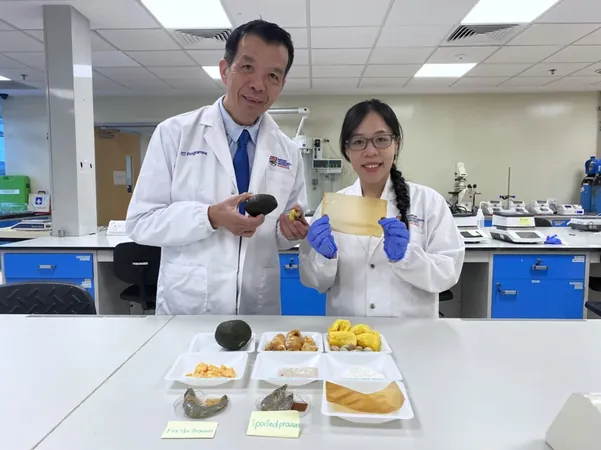
Breakthrough Discovery in Stem Cell Research: Are We on the Path to Revolutionary Healing?
2024-10-10
Author: Ming
Introduction
In an exciting leap forward for medical science, researchers at Texas A&M University have uncovered a key signaling pathway that could enhance the speed and reliability of human stem cell differentiation.
Research Leadership
Led by Dr. Gregory Reeves, a professor of chemical engineering, this discovery revolves around the highly conserved Bone Morphogenetic Protein (BMP) signaling pathway, which is essential in all animal species and can yield diverse outcomes depending on its application.
Significance of the Research
Dr. Reeves emphasized the importance of this research, stating, 'With this research, we are beginning to put together a roadmap of how to alter cells, such as adult human stem cells. They differentiate faster and more reliably, which would lead to advances in the therapeutic potential of stem cells.' This revelation opens new doors for regenerative medicine, potentially accelerating therapies for a myriad of conditions, including degenerative diseases and injuries.
Study of Signaling Pathways
The research team extensively studied how various cell signaling pathways influence cellular behaviors across different tissues. The BMP signaling pathway, in particular, plays a critical role in guiding cellular responses and decisions. 'A cell is definitely a complex system,' remarked Reeves. 'As we delve deeper into biology, we continue to discover that these biological systems are rich with intricate engineering principles.'
Research Findings
The findings were recently detailed in a paper published in the journal npj Systems Biology and Applications, where the research team examined how the BMP pathway manages three crucial performance objectives: speed, noise attenuation, and the capacity to function as a linear sensor.
Contextual Behavior of the BMP Pathway
In their study, the researchers observed significant differences in how the BMP pathway operates in various contexts. For instance, in fly embryos, activation of this pathway triggers rapid responsiveness, while in human stem cells, the reaction is slower but offers enhanced accuracy by filtering out extraneous signals. 'The same pathway reacts differently based on the context,' Dr. Reeves explained.
Impact of Protein Concentration
One of the key takeaways from this research is the realization that the concentration of BMP signaling proteins within cells can significantly affect the balance between these performance objectives. Interestingly, although the BMP pathway is utilized throughout an organism's life, its behavior can vary dramatically depending on the biological context—showcasing the inherent adaptability of cellular signaling.
Efficiency and Compromise
Dr. Reeves noted, 'Even though the pathway is wired the same in all cells, the concentrations of signaling proteins differ from one cell type to another. For example, in a fly embryo, we may witness high concentrations leading to a swift and reactive system, whereas human cells might operate on lower concentrations that ensure more precise and noise-free outcomes.'
Conclusion
Importantly, the research highlights that the system's efficiency is not without compromise; as the BMP pathway strives to balance its performance objectives, it often must prioritize some over others—a fascinating interplay that the team explored using multi-objective optimization strategies.
Future Implications
Dr. Reeves concluded, 'We can adjust these parameters to achieve a slightly faster response or a more noise-resistant output, but that will come at the cost of linear sensitivity.' This remarkable study not only sheds light on fundamental cellular processes but also hints at promising advancements in stem cell therapies that could one day reshape modern medicine.
Stay tuned as we follow the implications of this groundbreaking research and what it means for the future of healthcare!




 Brasil (PT)
Brasil (PT)
 Canada (EN)
Canada (EN)
 Chile (ES)
Chile (ES)
 España (ES)
España (ES)
 France (FR)
France (FR)
 Hong Kong (EN)
Hong Kong (EN)
 Italia (IT)
Italia (IT)
 日本 (JA)
日本 (JA)
 Magyarország (HU)
Magyarország (HU)
 Norge (NO)
Norge (NO)
 Polska (PL)
Polska (PL)
 Schweiz (DE)
Schweiz (DE)
 Singapore (EN)
Singapore (EN)
 Sverige (SV)
Sverige (SV)
 Suomi (FI)
Suomi (FI)
 Türkiye (TR)
Türkiye (TR)